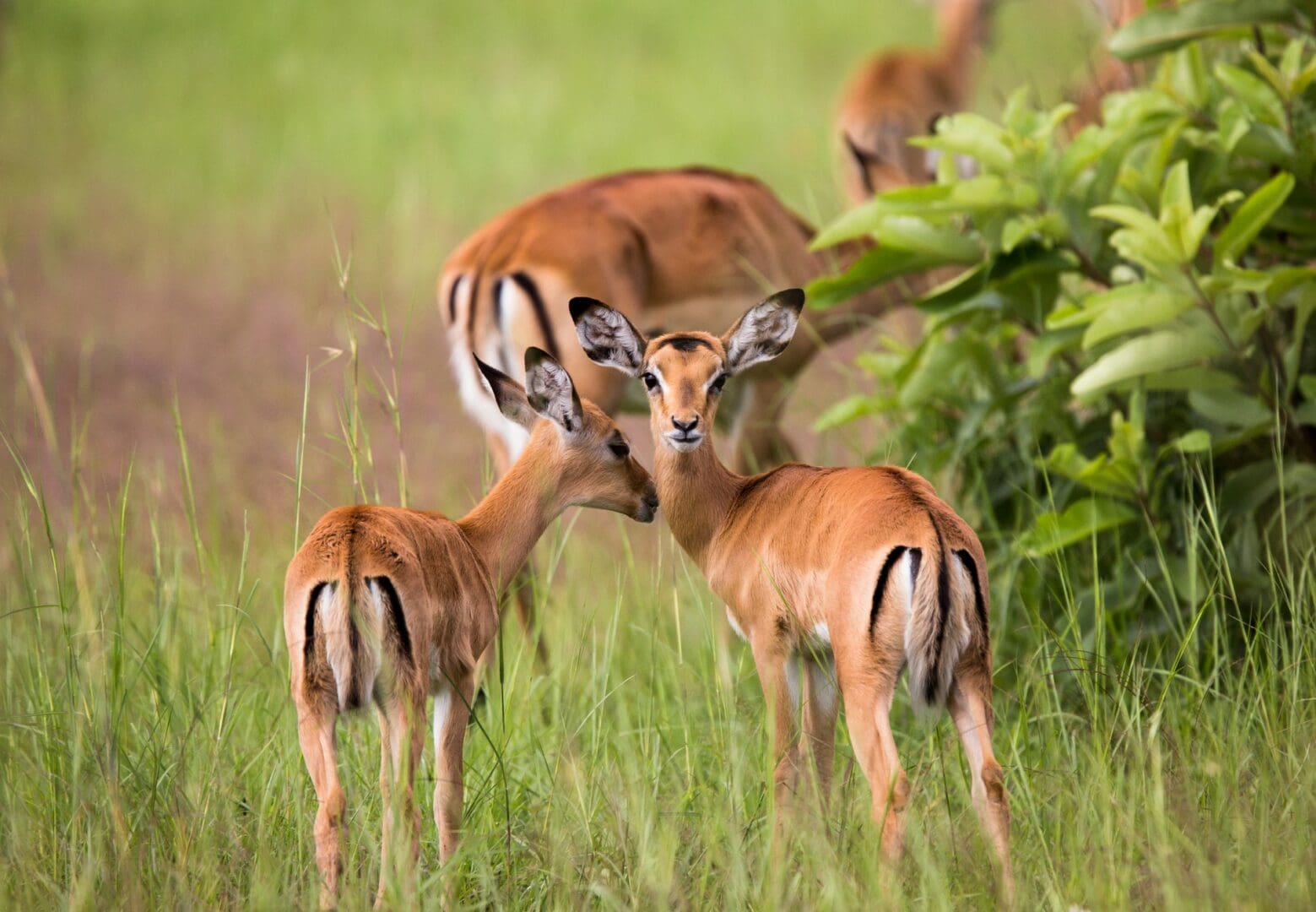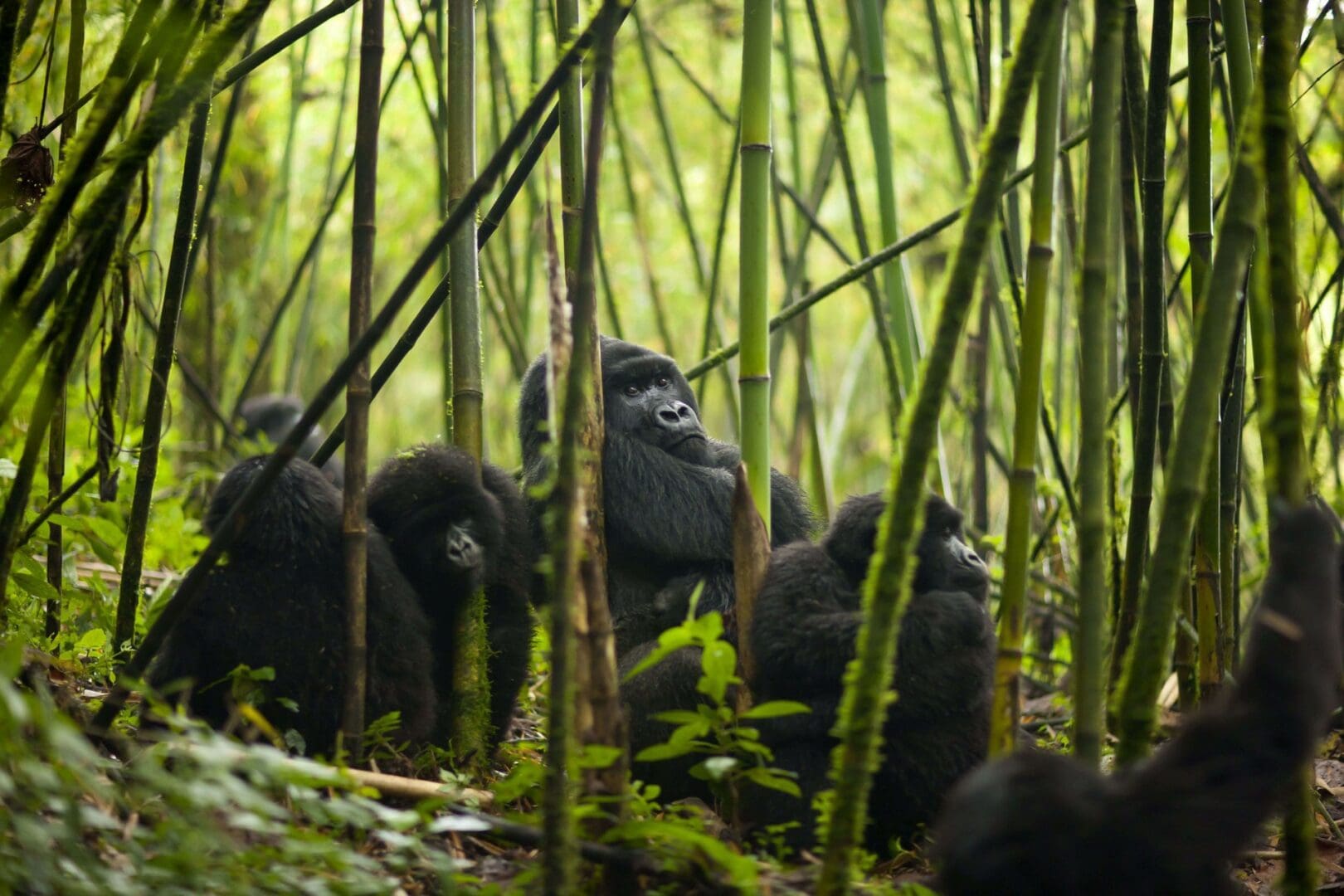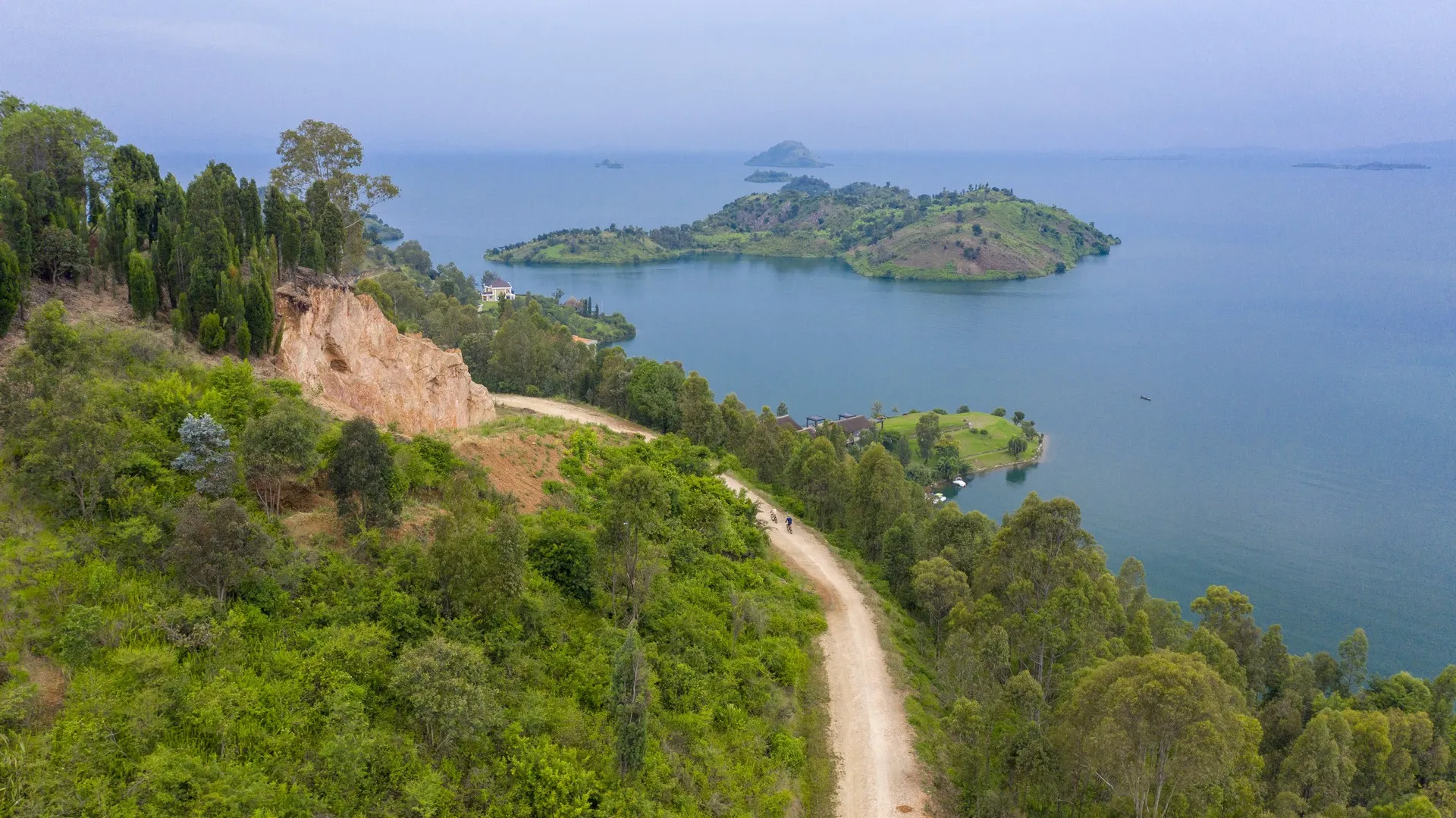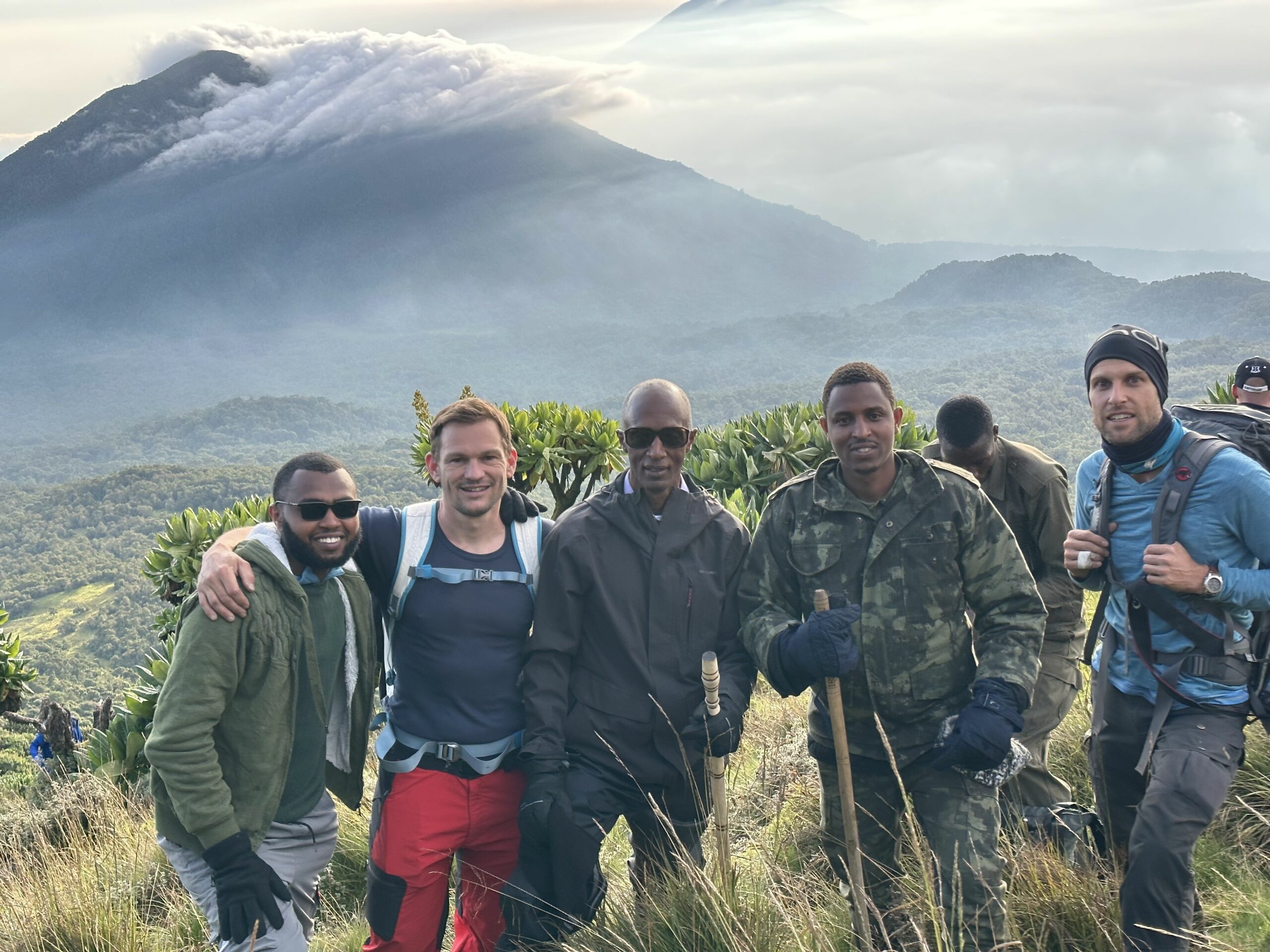Mountain gorillas are social animals living in groups also known as families, to help you understand more about these fascinating creatures. This article aims at showcasing how mountain gorillas thrive in the rainforests of East Africa, from their intricate nest-building rituals to their foraging habits and parental care. Delve more into their daily lives, highlighting their unique social structures and behaviours.
Mountain gorillas are more like humans leading complex lives full of interesting family bonds, leadership struggles, and heart-warming moments. In the misty forests of East Africa where they thrive, they live in families which are led by a dominant silverback who nurtures relationships among his females and offspring while guiding important decisions.
Gorilla trekking safaris provide an intimate glimpse into complex social structures, unique daily rituals, and intriguing communication methods of these fascinating forest creatures.
Social Structure of a Mountain Gorilla Family
Mountain gorillas live in families/groups called Troops.
Typically, a troop consists of one dominant adult male known as a silverback (who is the leader of the family), other males, several adult females, and their offspring. Sometimes, there is more than one adult male in a group but one dominant silverback.
A Silverback is a male gorilla at least 14 years old and is identified by the patch of silver hair on its back which appears as it ages, silverbacks also have large canine teeth that grow as they mature.
Both male and female gorillas often leave their paternal families when they reach maturity.
In the mountain gorilla family setting, females are more likely to leave their birth family than males. When males mature, they may leave their birth family to create their own troops, attracting females who are also looking for a new home. However, some male gorillas choose to stay with their original family and become second-in-command to the silverback. If the silverback passes away, these males might take charge or mate with the females in that particular group.
The Silverback – The head of the family
In a mountain gorilla family only with one adult male, if the dominant silverback dies, the females and their offspring must find a new group to join because the new leader may harm them. Without the protection of their silverback father, the offspring are at risk, and joining a new group is a way to stay safe.
The silverback is the leader of the gorilla group, he makes all the decisions, helps settle arguments, and decides where the group goes, leading them to find food and ensuring everyone is safe and well. Younger male gorillas called Blackbacks between 8 and 12 years old support the silverback, they do not have the silver hair on their back like the older silverbacks but they play a crucial role in protecting the group.
Family social bonding
The bond between the silverback and the female gorillas is essential for the stability of the family, they maintain their relationships by grooming each other and staying close. Females for strong connections with males for mating opportunities and protection.
Male gorillas generally have weaver social bonds, especially with more than one male, where there is a lot of competition for mates. However, in all-male groups, they often get along well, playing, grooming, and spending time together.
Family Conflicts
Severe fights are rare in stable gorilla families, but when two mountain gorilla groups meet, the silverbacks may fight fiercely using their large canine teeth to cause injuries. While mountain gorillas can sometimes be aggressive, especially between males and females, serious injuries are infrequent. Female gorillas who are related tend to be friendly but others may act aggressively toward each other, females may fight for attention from males and sometimes, a male gorilla might step in to stop the fight.
Reproduction and Parenting in a Mountain Gorilla Family
In the mountain gorilla family, females mature at around 10 to 12 years old. While the males mature at about 11 to 13 years old. A female gorilla goes through her first menstrual cycle when she is six years old but she cannot have babies for the next ears. They usually have their first baby when they are 10 years old, the time between each birth for a female gorilla is about four years.
Male gorillas can have babies even before they are fully grown.
Mountain gorillas can mate any time of the year.
Mating
When female gorillas want to mate, they show signs by approaching the males slowly while making eye contact. They might reach out or tap the ground to get the males’ attention. Sometimes, females discretely mate with multiple males in the same family.
Male gorillas let females know they are interested in mating by getting close to them and making certain sounds or movements. Gorillas have been seen having face-to-face mating.
Parenting
Gorilla babies in a family require a lot of care and rely on their mothers to keep them safe, while male gorillas do not help much with the babies, they spend time teaching them how to socialize and bond. The silverback, the head of the family looks out for the babies and protects them from any trouble within the group. Babies stick close to their mothers for the first few months, sleeping in the same nest and nursing often
As gorilla babies grow older, they start spending short periods away from their mothers. Around one year old, they might move a bit further, and by 18 to 21 months, they spend more time apart from their mothers and their growing babies.
Communication within the mountain gorilla family
Communication among the mountain gorillas is quite fascinating, the gorillas have around twenty-five different ways of talking to each other and they use many of these sounds when moving in the thick vegetation
Often, you will hear their grunts and barks while they are on the move. This helps the family members know where everyone is, they usually use these sounds when they need to sort out issues among themselves like when they need to discipline one of them.
When there is danger or something to be cautious about especially when the silverback is involved, you might hear some screams and roads. On the flip side, deep and rumbling belches are like signs of happiness and contentment. Often, you will hear these sounds on a gorilla trekking safari when they are eating or resting and chatting within the group.
Mountain gorillas are pretty good at avoiding physical fights in a family, usually, they resolve family conflicts by doing things that look threatening but don’t actually hurt anyone. They have this unique thing called a “ritualized charge display”, it is like a performance with nine steps including making loud noises, pretending to eat, standing on two legs, throwing stuff, beating their chests, and even slapping the ground. This is their way of saying “Hey, am big and strong, let’s not fight”.
Chest–beating is a typical gorilla behavior, this also varies in how fast or slow they do depending on their size, males tend to do it more when they want to tell females in the family that they are ready to mate. Basically, in gorilla language, it is like they are saying ‘I am grown, strong, and ready to be a dad”.
The gorilla family diet and how they forage
A mountain gorilla family has a daily routine that includes rest, travel, and feeding. Their diet is mainly plant parts like leaves, stems, and shoots with only a tiny portion of their diet coming from fruits. Luckily enough, there is plenty of food for everyone in the family so they don’t have to compete for food in the tropical forest of East Africa. They can live in different places and eat various things.
Since fruits are not easy to always find, the gorilla family has to travel more in the jungle to find the fruits. Mountain gorillas also eat insects like ants and termites and use tools like sticks to extract them from their hives.
Mountain gorillas do not drink water, this is because their food, like the juicy plants, already has a lot of water. Even though it is rare, there have been times when mountain gorillas were seen drinking water.
Nesting – how the gorilla family spends their night
Mountain gorillas have a unique way of spending their nights, they create their own beds in the form of nests using branches and leaves. The nests usually measure between 2 to 5 feet wide and each gorilla makes its own. The silverback typically chooses a spot where he can keep an eye on all family members.
Unlike other primates like chimpanzees and orangutans, gorillas prefer to sleep on the ground instead of in tree branches. When gorilla babies are very young, they sleep with their moms, but as they grow older – around three years, they start making their own nests, usually close to where their moms sleep.
The gorillas do not follow a set pattern for building their nightly nests, they use different places, trees, and materials opportunistically. According to scientists, they believe that the gorillas’ nest–building is a form of tool use. They create a new nest every night, even if the family stays in the same place, they usually start making their nests about an hour before it gets dark so that they are ready for a good night’s sleep when it gets dark.











